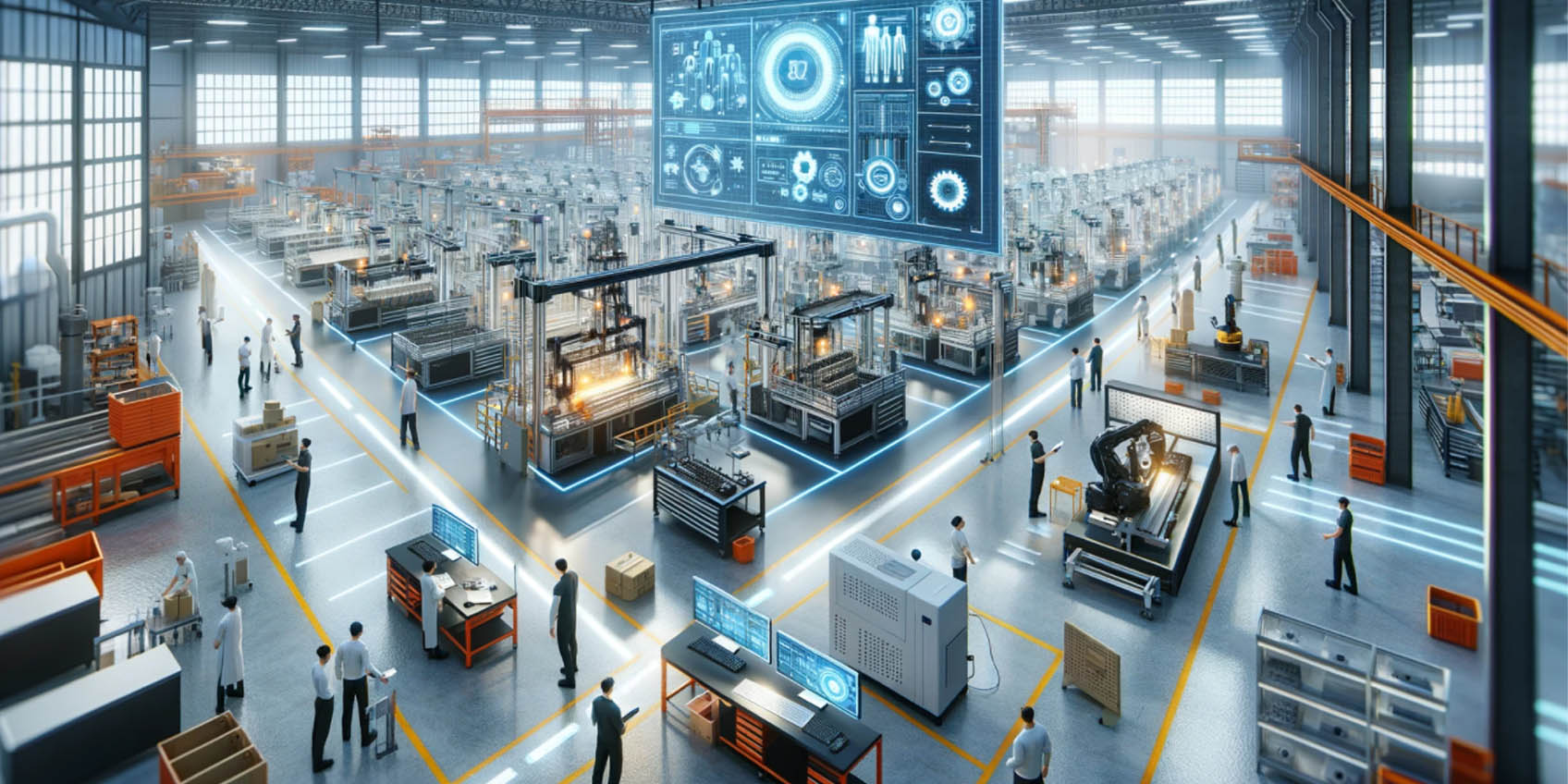TOF Technology: Transforming Smart Manufacturing for Industry 4.0

With the rapid progress of Industry 4.0 and smart manufacturing, the industrial sector is undergoing a profound transformation. The integration of advanced technologies is enhancing efficiency, precision, and automation in production processes. Among these innovations, TOF (Time of Flight) technology stands out as a key enabler, revolutionizing industrial automation with its high-precision distance measurement, real-time 3D sensing, and environmental adaptability. TOF sensors are increasingly used in robot vision, automated quality control, 3D scanning, smart warehousing, and production line optimization, significantly improving manufacturing operations.
What is TOF Technology?
TOF technology is an optical distance measurement and 3D imaging technique that calculates object distances by emitting light pulses and measuring their return time. Unlike traditional 2D imaging or LiDAR (Light Detection and Ranging) technologies, TOF sensors deliver high-precision depth maps and point cloud data, enabling fast and accurate 3D perception. This makes TOF ideal for applications that require rapid, high-precision measurements, such as object detection, recognition, and environmental monitoring.
Key Advantages of TOF Technology
- High-Precision Measurement – TOF sensors achieve millimeter-level accuracy, essential for precision manufacturing and quality control.
- Real-Time 3D Imaging – TOF sensors capture dynamic 3D structures, enabling real-time sensing in fast-paced production lines and robotic environments.
- Non-Contact Measurement – TOF sensors operate without physical contact, reducing mechanical wear and improving system reliability.
- Environmental Adaptability – TOF sensors perform consistently in harsh industrial environments, including low-light, strong-light, dust, and fog conditions.
- Compact and Energy-Efficient – TOF sensors are small, low-power devices that can easily be integrated into industrial robots, automated systems, and smart factory infrastructure.
- High-Speed Object Detection – TOF technology enables fast-response tracking of objects, optimizing quality inspection and automation processes.
Core Applications of TOF Technology in Smart Manufacturing
1. Robot Vision and Automation
TOF sensors play a crucial role in enhancing the vision systems of industrial robots, enabling improved performance in object recognition, obstacle avoidance, and automated picking.
- 3D Object Recognition – TOF cameras generate high-precision point clouds, allowing robots to accurately identify and classify objects for sorting and assembly.
- Smart Grasping and Handling – Integrated with AI, TOF sensors enable robots to adjust grip force and positioning, reducing the risk of product damage during material handling.
- Path Planning & Obstacle Avoidance – TOF sensors assist automated guided vehicles (AGVs) and collaborative robots in real-time navigation, avoiding obstacles and improving workflow efficiency.
2. Automated Quality Inspection
TOF technology enhances quality control in manufacturing by improving dimensional measurement, defect detection, and surface inspection.
- Precision Dimensional Inspection – TOF sensors provide real-time, high-accuracy measurements of product dimensions, ensuring adherence to design specifications.
- Weld Inspection – TOF laser scanners assess weld seam quality, detecting issues such as uneven heights or cracks that could affect product durability.
- Defect Detection – TOF-powered 3D cameras automatically identify surface defects, improving defect detection rates and production yields.
3. 3D Scanning and Automated Assembly
TOF sensors play an integral role in 3D scanning and assembly precision, driving automation and enhancing production line efficiency.
- 3D Scanning & Digital Twin – TOF technology enables fast and precise 3D object scanning, creating digital twin models that optimize product design and manufacturing workflows.
- Automated Assembly Precision – TOF sensors ensure accurate component alignment during automated assembly, reducing errors and defects.
- Self-Calibrating Robots – Combined with AI, TOF sensors enable robots to self-calibrate, improving part positioning accuracy in complex assembly tasks.
4. Smart Warehousing and Logistics
TOF sensors are vital in automated warehousing and logistics, improving inventory management and distribution efficiency.
- Smart Inventory Tracking – TOF sensors automate inventory tracking, scanning shelves in real time to manage stock levels and product locations.
- AGVs & Autonomous Forklifts – TOF-based navigation systems help AGVs and autonomous forklifts navigate warehouses, avoiding collisions and ensuring precise transport.
- Automated Sorting and Packaging – TOF-powered vision systems enable accurate package sorting and classification, enhancing operational efficiency in logistics and e-commerce operations.
Future Trends of TOF Technology in Smart Manufacturing
As AI, 5G, and cloud computing continue to evolve, the future of TOF technology in smart manufacturing looks promising.
- Higher Precision and Longer Range – Future TOF sensors will achieve micron-level precision, extending their range to support ultra-precise manufacturing processes.
- AI-Enhanced TOF Processing – AI will improve the interpretation of TOF data, enabling robots and machines to perform more complex automation tasks autonomously.
- 5G & Industrial IoT Integration – With 5G networks, TOF data will be transmitted in real time for predictive maintenance, remote monitoring, and instant analytics.
- Miniaturization and Energy Efficiency – Future TOF modules will be more compact and power-efficient, allowing seamless integration into a wide range of industrial applications, including wearable devices and robotics.
Conclusion: TOF Technology Driving the Future of Smart Manufacturing
TOF technology is a critical enabler of smart manufacturing, driving the transition to Industry 4.0. By providing high-precision 3D measurements, non-contact inspection, and real-time depth sensing, TOF sensors are transforming key manufacturing processes such as robotics, quality control, automated warehousing, and 3D mapping. As the technology continues to advance, TOF will play a pivotal role in enhancing production efficiency, reducing costs, and improving overall manufacturing quality, accelerating the path towards fully automated and intelligent smart factories.
Okulo™ P1 Precision RGB-Depth Sensing Camera: High-Quality Imaging, Advanced Time-Of-Flight Technology,100FPS, And Robust Hardware Integration
After-sales Service: Our professional technical support team specializes in TOF camera technology and is always ready to assist you. If you encounter any issues during the usage of your product after purchase or have any questions about TOF technology, feel free to contact us at any time. We are committed to providing high-quality after-sales service to ensure a smooth and worry-free user experience, allowing you to feel confident and satisfied both with your purchase and during product use.
-
Posted in
P1 Precision
Please upload banner from store admin blog pages
Please select collection from store admin blog pages








